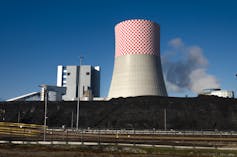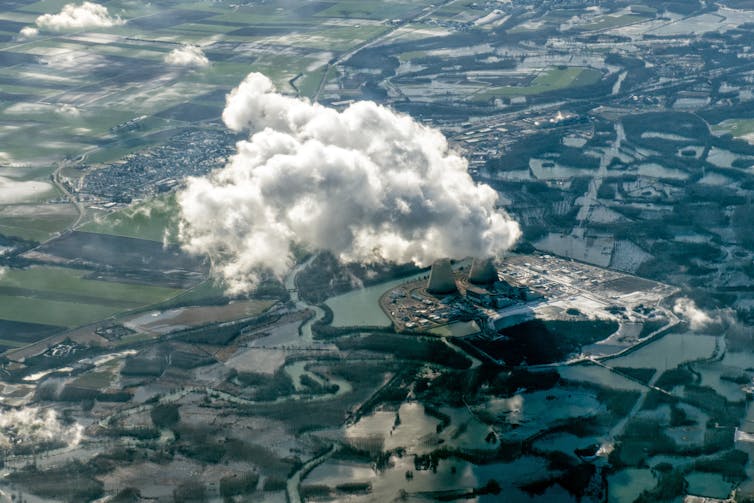
Ahead of next month’s COP27 climate summit we have been given a stark reminder of the lengths still required to tackle climate change. A new report estimates that investments of US$1 trillion (£904 billion) a year in renewable power will be needed by 2030 to avoid the effects of climate change. Scaling up private and public investment will be crucial in financing this transition.
Yet directing investment to where it can have the most decisive impact represents a challenge. “Greenwashing”, where organisations exaggerate their environmental credentials, is rife and impedes the flow of investment towards truly sustainable projects. One way to address this issue is by ranking activities in terms of how sustainable they are – producing something called a “taxonomy” of sustainable activities.
Set to become law in 2023, the EU Taxonomy for Sustainable Activities is one recent example of this. Embedded within many different regulations, financing mechanisms and subsidy schemes it is designed to direct investment in line with the European Green Deal – the EU’s strategy for achieving carbon neutrality by 2050.
But the EU taxonomy has attracted criticism, among them that many of its decisions are subjective and attract intense political lobbying. The decisions to classify gas and nuclear as climate-friendly investments, for example, have angered environmental groups and may be subject to a legal challenge. As the UK considers developing its own green taxonomy, there are concerns that it will suffer from similar issues.
Making green activities visible to investors
The taxonomy classifies what activities can be marketed as sustainable investments and provides a standard definition throughout the EU. Rather than having to assess what is sustainable from scratch, investors can simply refer to the taxonomy.
To be deemed as sustainable, an economic activity must contribute to various climate objectives. These range from climate change mitigation, to the sustainable use of natural resources and biodiversity restoration and include zero emissions transportation and afforestation. There is a broad consensus on most of the activities classified as sustainable.

If an activity is not on the list, then it is classified as unsustainable and its access to investment is limited. Carbon intensive coal-fired power generation is one such activity. Phasing out coal generation will reduce demand, with further impacts on investment in mines and coal-related infrastructure.
This will carry social and economic implications for coal-dependent economies, such as Poland. In 2019, the Polish coal industry accounted for 84,000 jobs, all of which could be at risk.
Some decisions are contentious
This is where the main drawback of the taxonomy lies. The power of any list to make or break an industry like coal in Poland means that its construction will be fiercely contested and certain decisions will involve subjectivity. This is particularly true where the criteria can have a profound impact on a country’s future growth.
Agriculture was initially excluded from the taxonomy. The decision was driven by the fear that its inclusion would conflict with the EU’s Common Agricultural Policy and limit farmers’ access to subsidies. The risk of disrupting subsidies worth €58.0 billion (£50.9 billion) and damaging EU food security was considered too high.
This has been subsequently reconsidered, reflecting the possibility that specific animal and crop production practices could make substantial contributions to biodiversity. Crop production often relies on natural processes such as pollination, while making the switch to crop production will cause less greenhouse gas emissions than livestock farming. In the future, various farming practices can be included in the taxonomy.
While the EU taxonomy’s construction was a long, carefully orchestrated process, it was also subject to intense political lobbying.
Despite unresolved concerns regarding the disposal of radioactive waste, pro-nuclear lobbyists fought hard to earn nuclear power generation its “green” classification. The inclusion of nuclear power was subject to a detailed series of technical studies.

Some countries say investments in gas are necessary to transition towards cleaner fuels. Under certain conditions, natural gas can now be included as a sustainable activity. This will allow the construction of new natural gas plants, locking countries into high-carbon energy generation.
In many cases, politically constructed taxonomies can maintain environmental injustice rather than solve it.
Lessons for the UK
Following Brexit, the UK is considering developing its own sustainable taxonomy in line with its growth objectives. But concerns have been raised that any taxonomy in the UK will be constructed to satisfy political short-termism. This could divert investment towards environmentally destructive activities.
Recent policy announcements, such as the reversal of the 2019 ban on fracking and increased oil and gas production suggest that this is a real possibility. Under a new leader in Liz Truss, the UK government has already announced plans to award more than 100 North Sea oil and gas exploration licenses.
But if constructed correctly, a taxonomy for sustainable activities remains a valuable tool as the world searches for sustainability. It holds the key for accessing the resources needed to support a sustainable transition.
Given the power that any taxonomy holds, greater transparency and scrutiny over how these criteria are constructed is needed. A robust independent evidence base for activities that may be considered sustainable is required. This would enable a classification that is closely aligned with climate targets, includes truly sustainable activities, and omits harmful activities that would otherwise continue. A taxonomy may be a list, but it has the power to shape the future.
Ian Thomson does not work for, consult, own shares in or receive funding from any company or organisation that would benefit from this article, and has disclosed no relevant affiliations beyond their academic appointment.
This article was originally published on The Conversation. Read the original article.







